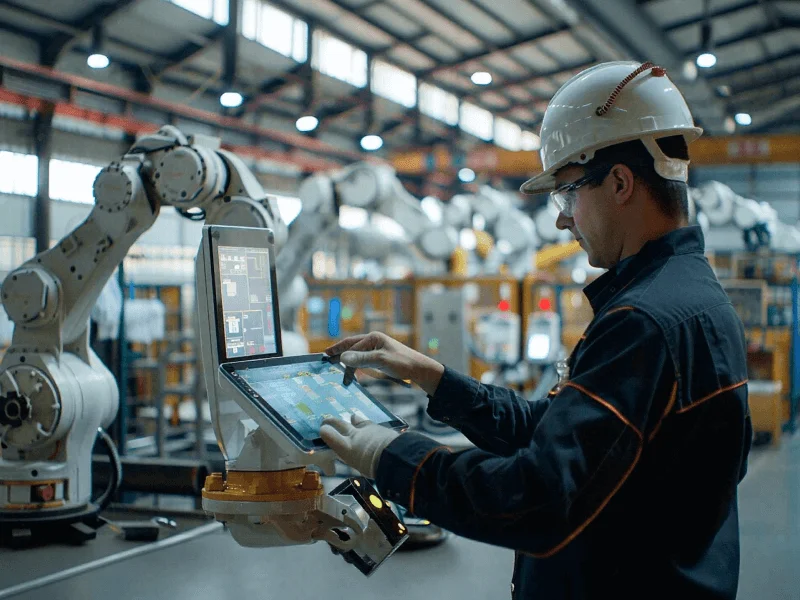Healthcare is a domain that requires intricate care and precision when implemented for those in need. A crucial component in achieving this goal is medical transcription. With advancements in Patient care technology, medical transcription has evolved from manual transcribing to intelligent systems powered by AI and machine learning.
In this article, we will explore how medical transcription is revolutionizing patient care and enabling the establishment of rapid-action clinics. Further, we will also discuss how leveraging insights gained from intelligent transcription solutions can be a game-changer.
Background on the Importance of Medical Transcription and Patient Care
Accurate and timely documentation of patient health records is essential for healthcare providers to deliver effective care as well as ensure precise future reference. Medical transcription plays a vital role in converting dictated patient information into written records.
These records are a crucial point of reference for physicians, specialists, and other healthcare professionals involved in a patient’s treatment journey.
AI Medical Transcription solutions have also assisted healthcare providers to tap into numerous benefits that can create a positive impact on patient care. Automated transcription powered by AI can substantially boost accuracy, and efficiency, and drive enhanced patient access to care.
Benefits of Medical Transcription for Patient Care
Improved Accuracy of Patient Health Records
Accurate patient health records are vital for informed decision-making by healthcare professionals. Not only can those help to give enhanced insights about the patient’s conditions, as well as assist with future references.
Intelligent medical transcription systems employ advanced algorithms to transcribe and cross-reference medical data. This helps minimize errors and ensures precision throughout the documentation process. This accuracy leads to improved diagnoses, appropriate treatment plans, and overall better patient outcomes.
Increased Efficiency and Reduced Wait Times
Time is of the essence in healthcare, and reducing wait times for patients is crucial. Manual transcription processes can be time-consuming, leading to delays in updating patient records. However, automated transcription solutions powered by AI enable real-time transcriptions, ensuring faster availability of accurate patient data. This streamlined process can also lead to additional benefits such as reduced waiting times, which allows healthcare providers to make quicker decisions and provide prompt care.
Better Patient Flow Management
Efficient patient flow management is essential for hospitals and clinics to optimize resources, ensure a prompt treatment procedure, and offer a patient experience. Intelligent medical transcription systems seamlessly integrate with scheduling and appointment systems. It helps healthcare providers to track and manage patient data effectively. This integration streamlines workflows, reduces administrative burdens, and improves overall operational efficiency.
Enhanced Patient Access to Care
Medical transcription, when combined with electronic health records (EHRs), allows healthcare providers easy access to patient information across multiple facilities. With authorized access to comprehensive and up-to-date records, healthcare professionals can make informed decisions, provide consistent and seamless care to the patients, and uplift the patient experience. This accessibility eliminates redundant processes. Some examples of these processes include monotonous procedures and Tests and optimizing time and resources for healthcare providers as well as patients.
The Future of Medical Transcription and Patient Care
Here’s what the future of medical transcription and patient care is expected to look like:
Adoption of AI and Machine Learning in Medical Transcription
As technology continues to advance, the healthcare industry is embracing AI and machine learning in medical transcription. AI and machine learning continually learn and adapt to vast amounts of data, leading to improved accuracy and efficiency with time. Hence, due to the consistent growth and development in the front, medical transcription is all set to become more reliable and cost-effective.
Integration of Medical Transcription with Electronic Health Records
The integration of medical transcription with EHR systems is a significant development in the healthcare industry. Seamless synchronization between Medical Transcription Services and EHR platforms ensures real-time updates and access to critical patient information. This integration offers additional benefits such as a streamlined workflow, enhanced collaboration among healthcare professionals, and holistic patient care. Hence, in a nutshell, the healthcare industry is expected to see a positive transformation.
Here’s how medical transcription for patient care is improving processes for healthcare providers and patients:
1. Accuracy of Patient Health Records
Medical transcription plays a critical role in ensuring health record accuracy. By transcribing dictated information into written form, transcriptionists can capture essential details, such as medical history, symptoms, diagnoses, and treatment plans. Intelligent medical transcription systems leverage AI and machine learning algorithms to introduce an added layer of precision. This documentation precision leads to improved diagnoses, appropriate treatment plans, and better patient outcomes.
2. Efficiency and Reduced Wait Times
Manual transcription processes can be tedious, monotonous, and prone to error which may cause delays in updating patient records. However, AI- automated transcription solutions enable real-time transcriptions. Healthcare providers can now access accurate patient data promptly, and with accuracy, thereby reducing wait times for patients. This streamlined process offers quicker decision-making and provides prompt care, leading to improved patient satisfaction and better solutions for the patients.
3. Patient Flow Management
Efficient patient flow management is essential for hospitals and clinics to optimize resources and enhance the patient experience. Medical transcription systems seamlessly integrate with scheduling and appointment systems. This further enables healthcare providers to track and manage patient visits efficiently. This integration streamlines workflows, reduces administrative burdens, and improves overall operational efficiency by eliminating monotonous processes. With better patient flow management, healthcare facilities can provide timely care and minimize wait times for patients.
In a nutshell
The potential of medical transcription to revolutionize patient care is evident through the positive impact it brings to both healthcare providers and patients alike.
However, it continues to bridge age-old gaps that have been long-standing and waiting to be resolved. Automated transcription reduces wait times, increasing efficiency in care delivery. Better patient flow management optimizes resources and enhances the overall patient experience. Additionally, enhanced patient access to care through integrated transcription and EHR systems facilitates comprehensive and coordinated treatment. With these advantages, medical transcription stands as a game-changer in the healthcare industry, transforming patient care and setting the stage for a more patient-centric approach.
To explore further solutions for healthcare transformation, visit Acuvate’s Healthcare Solutions.



